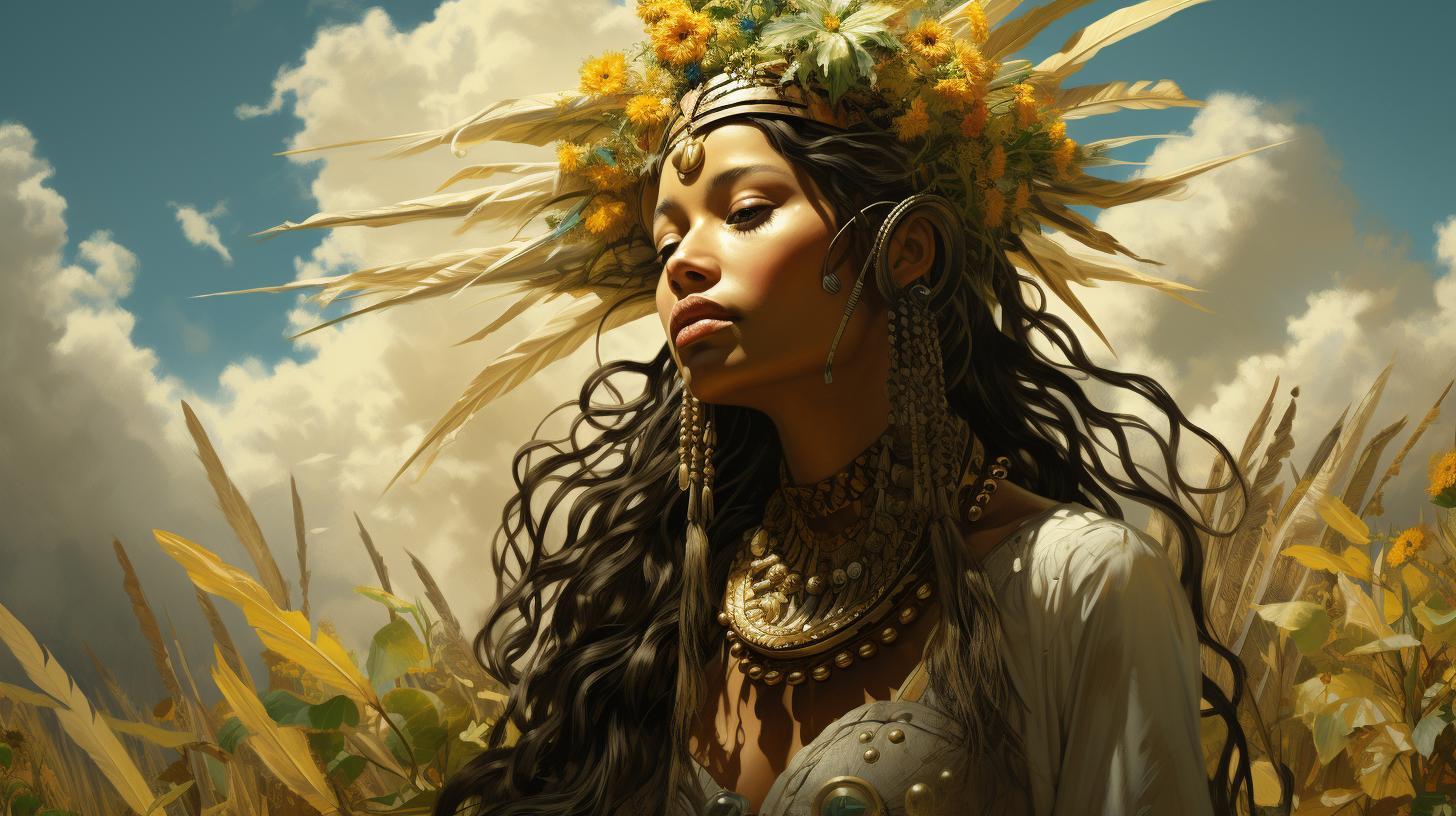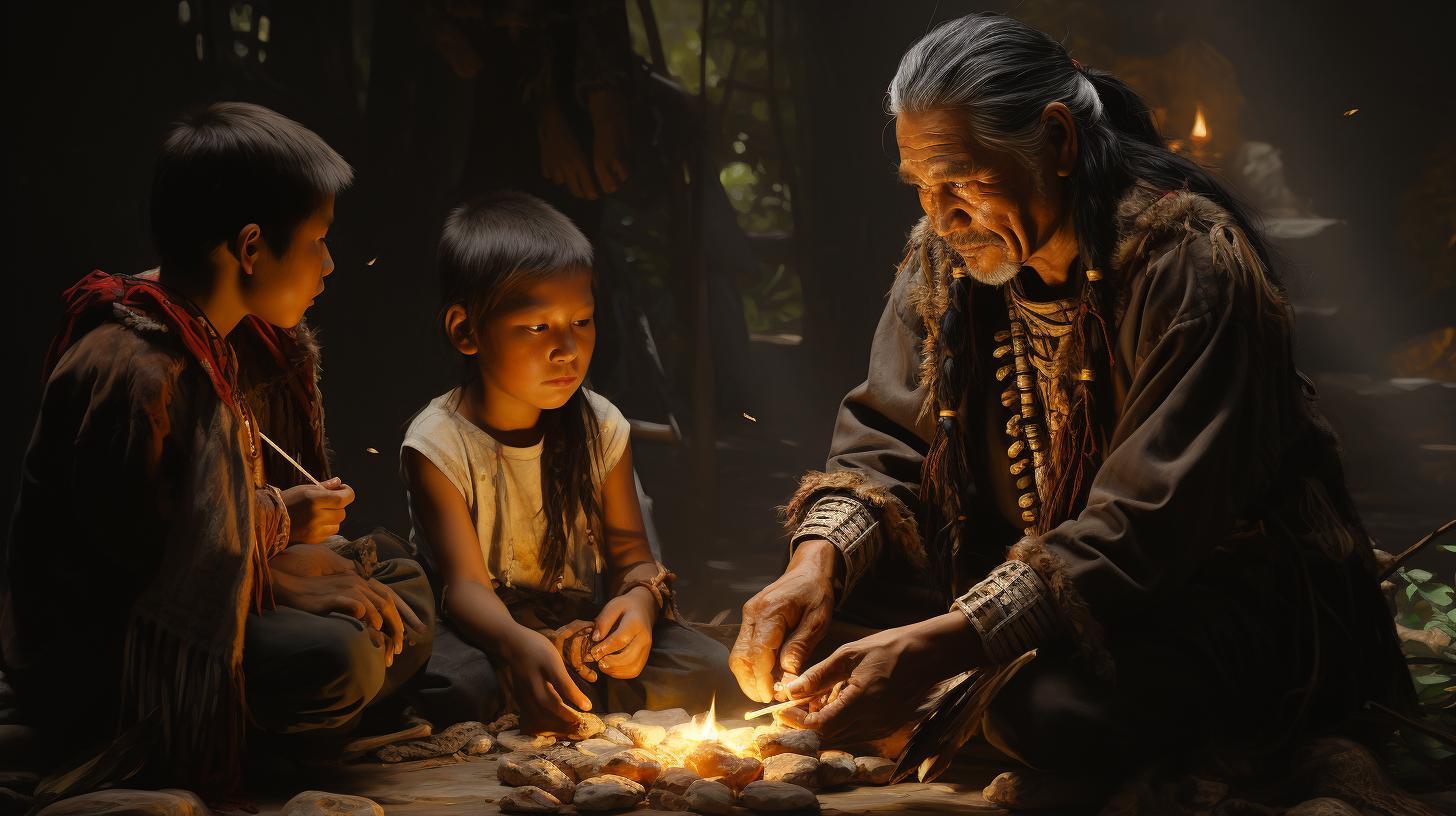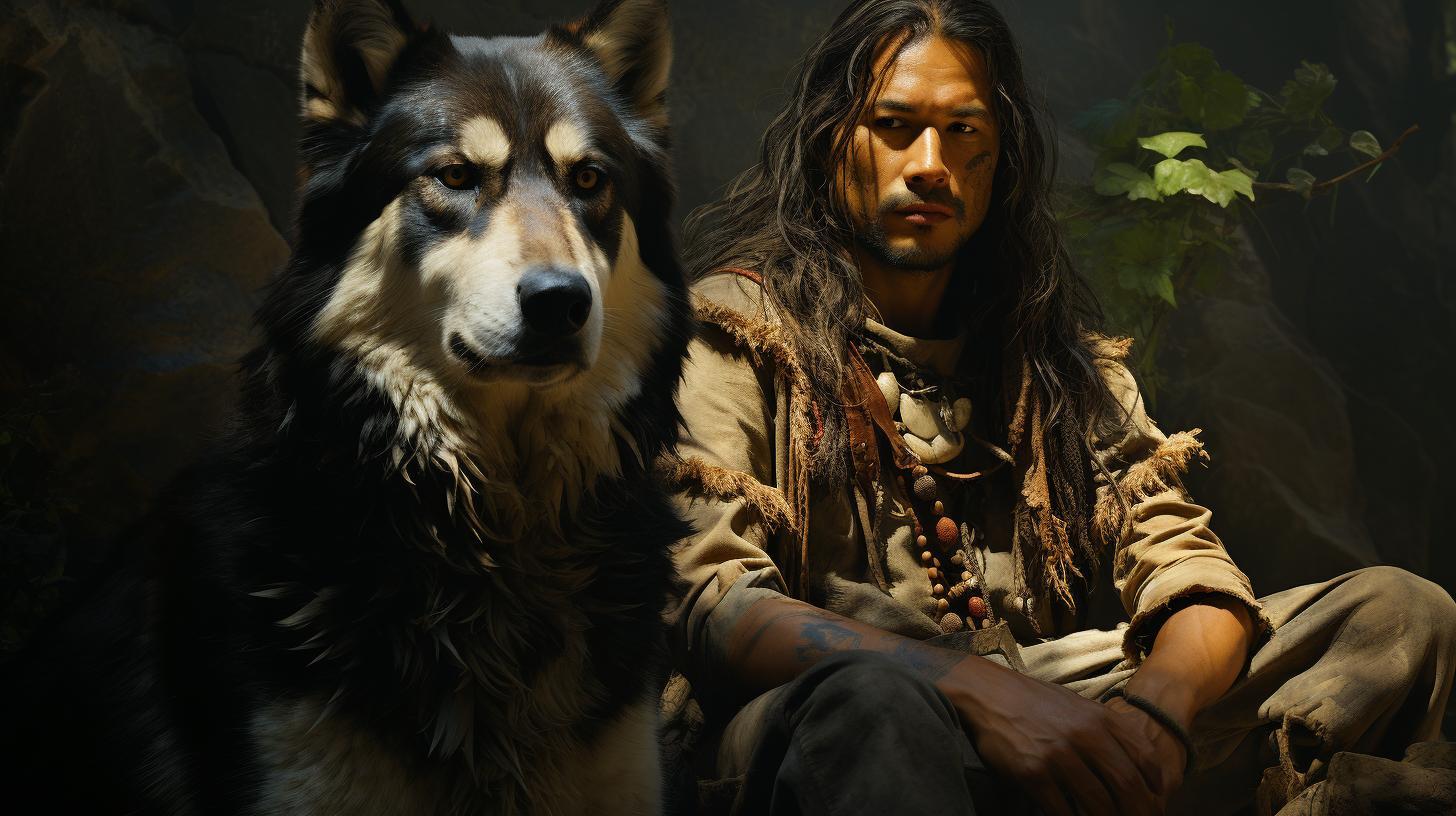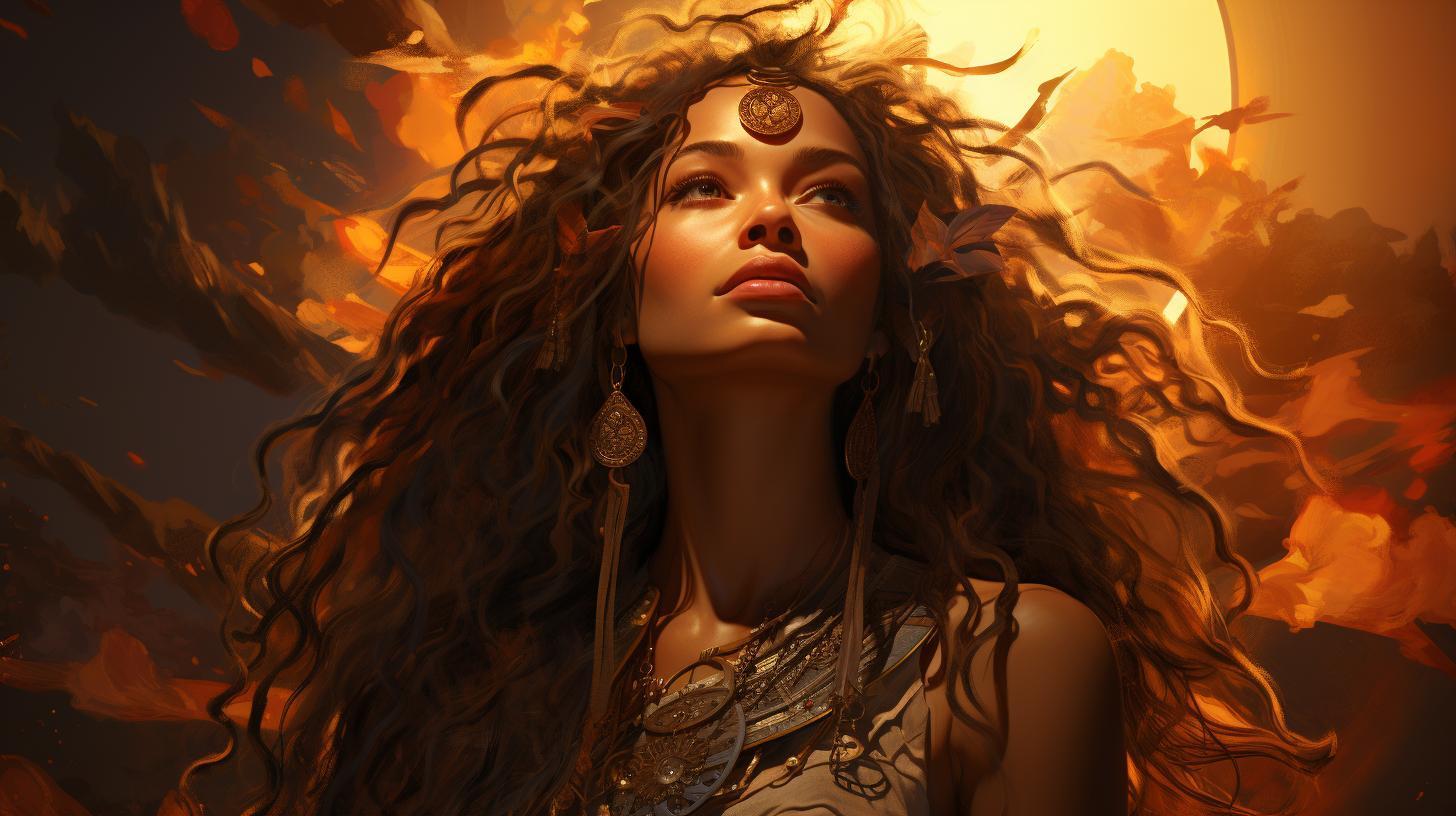Exploring the Enigmatic Cherokee Gods and Goddesses
Cherokee gods and goddesses play a significant role in their spiritual beliefs. According to Cherokee mythology, these divine beings were instrumental in the creation of the world and continue to influence their culture.
The wise and powerful Sun Goddess, Unelanuhi, holds a prominent position, along with other enigmatic figures such as the traveler spirits, the stone man, the trickster rabbit, the thunder god, and the mysterious witch.
Cherokee mythology also encompasses rituals, ceremonies, healing practices, and the preservation of their oral traditions. Various written resources and online sources provide insights into this captivating aspect of Cherokee culture.
Understanding Cherokee Spiritual Beliefs
Cherokee spiritual beliefs encompass a deep understanding of the world and its origins. This section explores their beliefs concerning the creation of the world, the influence of spirits in Cherokee culture, and delves into the fascinating Cherokee pantheon.
Beliefs About the Creation of the World
The Cherokee people hold a profound belief in the sacredness of the world’s creation. They attribute the origins of the world to a series of totemic spirits, who acted as initiators and bestowers of dreams, visions, and signs.
The significance of these spiritual beliefs lies in the understanding that the world was created in collaboration with the goddess Unelanuhi and a small aquatic beetle known as Dâyuni’sï. This mythical account narrates how the Earth was initially surrounded by water, suspended by ropes tied to each cardinal point.
The beetle retrieved a portion of mud from the water, which expanded in all directions, giving birth to the Earth as it exists today.
The Influence of Spirits in Cherokee Culture
Spirits play a vital role in Cherokee culture, guiding and shaping their beliefs and traditions. One of the prominent spiritual beings is the enigmatic traveler spirits known as Nunnehi. These spirits are believed to possess the ability to journey between realms and interact with humans in various ways.
Thunder and lightning also hold remarkable significance in Cherokee spirituality. Asgaya Gigagei, the thunder god, is revered as one of the powerful forces in their belief system. Thunderstorms are seen as a form of communication between Asgaya Gigagei and the Cherokee people, carrying important messages and symbolism.
Exploring the Cherokee Pantheon
The Cherokee pantheon encompasses a diverse array of gods, goddesses, and mythical beings. Unelanuhi, the wise and powerful sun goddess, plays a central role in Cherokee mythology, presiding over the Earth and all its affairs.
In addition to Unelanuhi, there are other fascinating figures such as Ocasta, the fabled stone man, and Jistu, the mischievous trickster rabbit. These unique entities each contribute to the richness of Cherokee mythology and are revered for their distinctive roles.
Understanding the Cherokee pantheon provides insights into the complex spiritual beliefs and cultural heritage of this extraordinary Native American tribe.
Rituals and Ceremonies in Cherokee Religion
Rituals and ceremonies are fundamental to Cherokee religion, providing a means for spiritual connection, expression, and healing. This section delves into three important aspects of Cherokee rituals and ceremonies: The Green Corn Ceremony, The Ghost Country, and the Importance of Dance in Cherokee Spirituality.
The Green Corn Ceremony: A Celebration of Renewal
The Green Corn Ceremony holds great significance for the Cherokee people. It is an annual celebration that takes place during the late summer when the corn is ready to be harvested.
This ceremony serves as a way to express gratitude to the deities for a bountiful harvest and to seek renewal and purification.
- Participants gather at the ceremonial grounds and take part in various rituals, including fasting and purifying their bodies through traditional medicine.
- A sacred fire is kindled, and prayers and songs fill the air, invoking blessings for the community.
- The first ears of corn are ceremoniously consumed, symbolizing the renewal of life and sustenance.
- Dances and games are performed, fostering a sense of unity, joy, and harmony among the Cherokee people.
The Ghost Country: A Journey in Cherokee Afterlife Beliefs
Cherokee spirituality encompasses beliefs about the afterlife, and the concept of the Ghost Country plays a central role.
According to tradition, after death, the soul embarks on a journey to the Ghost Country, a realm where spirits reside.
- Cherokee funeral customs include washing and dressing the deceased in their finest attire and placing personal belongings in the burial mound.
- Prayers and rituals are performed to guide the departed soul on their journey to the Ghost Country.
- The Cherokee believe in the interconnectedness of the living and the spirits, and they maintain a deep reverence for their ancestors.
The Importance of Dance in Cherokee Spirituality
Dance plays a vital role in Cherokee spirituality, serving as a means of communication, celebration, and honoring the divine.
Various types of dances hold special significance in different contexts.
- The Stomp Dance, also known as the Friendship Dance, is a communal dance performed during social gatherings, ceremonies, and celebrations.
- The Eagle Dance symbolizes connection with the spiritual realm and taps into the power and grace of the eagle.
- The War Dance, a vigorous and rhythmic dance, is performed to honor warriors, seeking protection and victory in times of conflict.
Through rituals and ceremonies, the Cherokee people maintain their cultural identity, strengthen their spiritual bonds, and pass down their traditions from one generation to the next.
Healing Practices and Shamanism in Cherokee Mythology
Healing practices and shamanism hold significant importance in Cherokee mythology, playing a vital role in the well-being and harmony of the community. These practices are deeply rooted in the belief that the natural world holds the power to heal and provide remedies for various ailments.
The Healing Power of Plants and Medicines in Cherokee Culture
In Cherokee culture, plants and medicines are revered for their healing properties. The Cherokee people have an extensive knowledge of their environment and the medicinal properties of various plants. They believe that different plants possess unique abilities to treat and cure illnesses.
Herbal remedies, made from a combination of roots, leaves, and bark, are used to address physical, emotional, and spiritual imbalances. These remedies encompass a wide range of ailments, including digestive issues, respiratory problems, and skin conditions.
Cherokee healers, known as medicine women and men, possess deep wisdom and understanding of the healing properties of plants. They are responsible for gathering and preparing these natural remedies, often passed down through generations, following specific rituals and ceremonies to ensure their effectiveness.
The Role of Shamanism in Cherokee Society
Shamanism is an integral part of Cherokee society, serving as a bridge between the physical and spiritual realms. Cherokee shamans, also known as “uktena,” are respected and revered for their spiritual guidance and healing abilities.
Shamans enter trance-like states to communicate with spirits and receive messages and guidance from the divine realm. They perform various rituals and ceremonies, such as the smudging, drumming, and chanting, to invoke spiritual energies and facilitate healing.
The Significance of Shamanic Healing in Cherokee Community
- Shamanic healing addresses physical, emotional, and spiritual ailments
- It promotes balance and harmony within the individual and the community
- Shamans provide spiritual guidance and support during challenging times
- They assist in soul retrieval, removing negative energies, and restoring spiritual well-being
- Shamanic healing ceremonies often involve the participation of the entire community, fostering unity and collective healing
In summary, healing practices and shamanism hold a significant place in Cherokee mythology.
The healing power of plants and medicines, combined with the spiritual guidance of shamans, contributes to the overall well-being and harmony of the Cherokee community.
Preservation of Cherokee Mythology
The preservation of Cherokee mythology is essential to safeguard the rich spiritual heritage of the Cherokee people. This section explores the different methods through which the mythology has been transmitted and preserved over time.
The Oral Tradition of Transmitting Cherokee Mythology
The oral tradition is at the heart of preserving Cherokee mythology. For countless generations, knowledge of the gods and goddesses has been passed down through spoken narratives, storytelling, and ceremonial rituals.
Elders play a crucial role in transmitting these myths, ensuring their survival for future generations.





